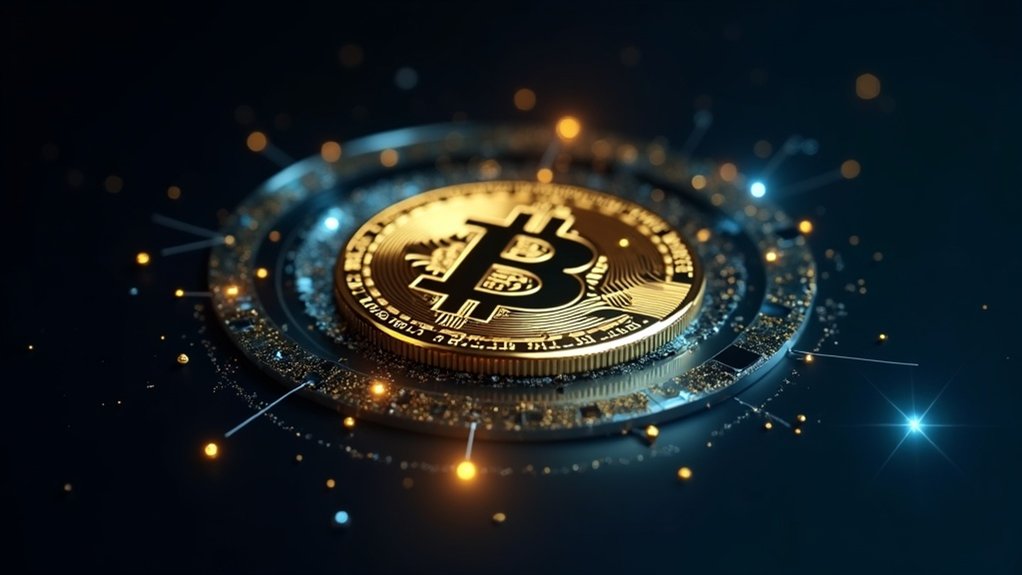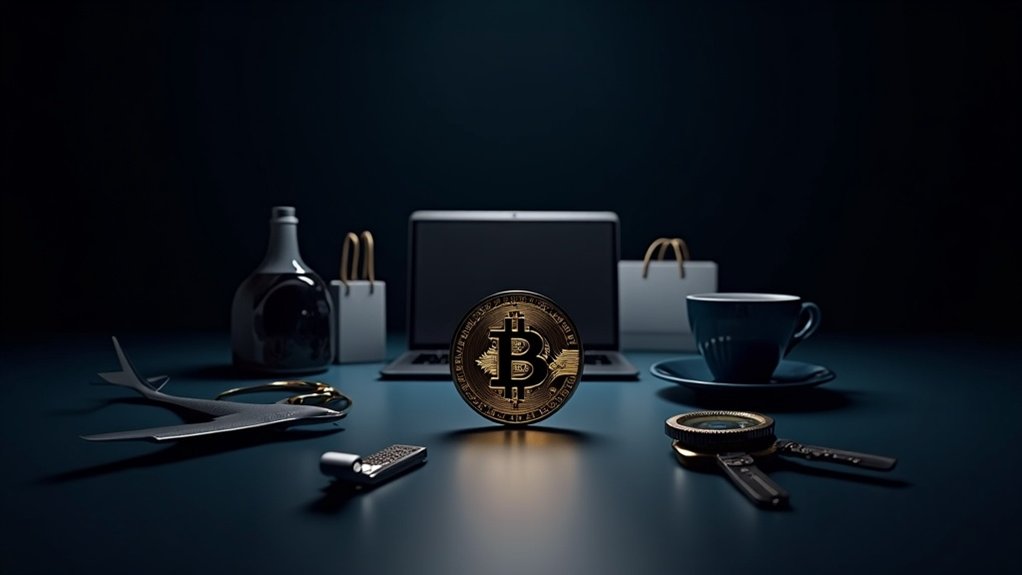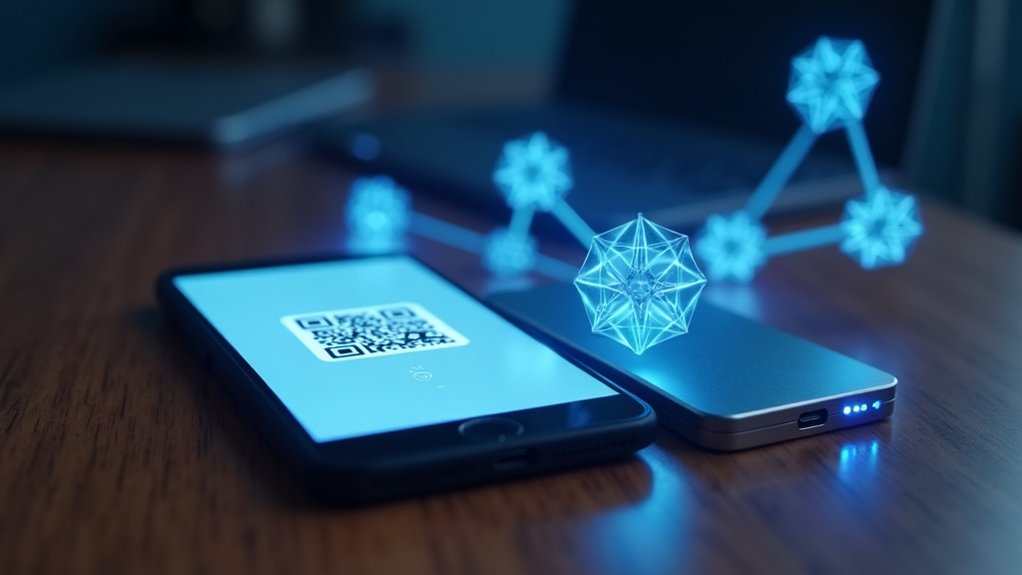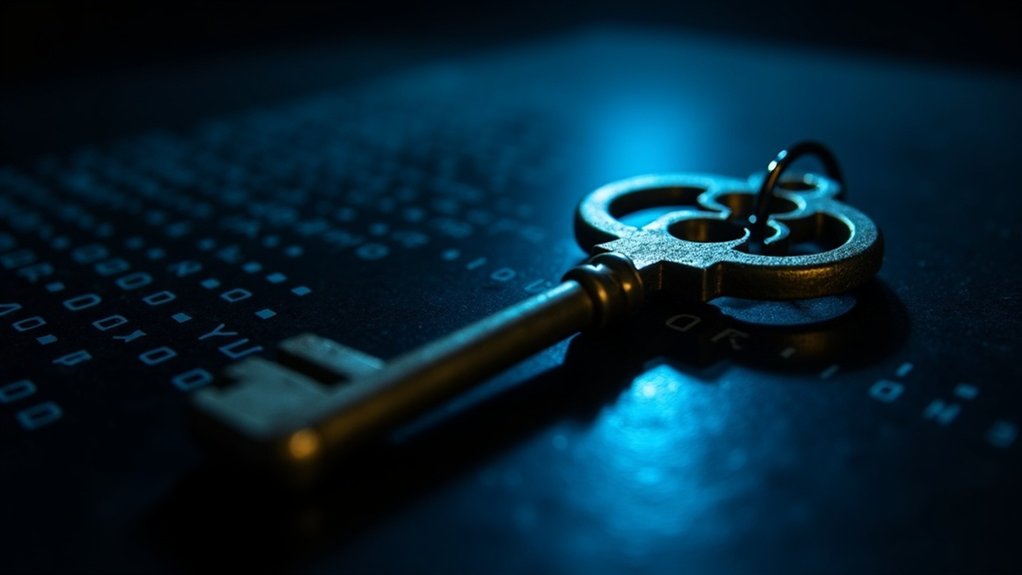Bitcoin Ordinals transform regular satoshis into unique, trackable assets by assigning sequential numbers to them. Launched in 2023 after the Taproot upgrade, they allow users to inscribe images, text, or other data directly onto Bitcoin’s blockchain. No off-chain storage needed. They’re Bitcoin’s version of NFTs, but without smart contracts or royalties. Ordinals have sparked controversy, driving up transaction fees and sparking debates about Bitcoin’s purpose. The rabbit hole of digital artifacts goes much deeper.
Bitcoin Ordinals have crashed onto the crypto scene with all the subtlety of a sledgehammer.
They’re not your typical NFTs – far from it.
At their core, Ordinals assign unique sequential numbers to individual satoshis (the smallest Bitcoin units), turning these previously fungible bits into distinct, trackable assets.
Each sat gets its own identity.
Revolutionary? Maybe. Controversial? Absolutely.
The magic happens through inscriptions – the process of embedding data directly into Bitcoin transactions.
Images, text, audio, code – whatever digital content you fancy can be permanently etched onto the blockchain.
Similar to ERC-721 standard used in Ethereum NFTs, Ordinals enable unique digital asset ownership on Bitcoin.
No off-chain storage. No external links. Just pure, on-chain data married to a specific satoshi forever.
This wasn’t always possible on Bitcoin.
The Taproot upgrade changed everything, expanding transaction flexibility and making larger on-chain inscriptions practical.
Bitcoin maximalists are still processing their feelings about this development.
Creating an Ordinal involves precise technical choreography.
First, identify a target satoshi by its ordinal number.
Then construct a transaction containing your inscription payload within witness or script fields.
Once mined into a block, that inscription becomes permanent – as immutable as Bitcoin itself.
When the satoshi moves to a new wallet, the inscription follows.
Unlike Ethereum’s NFTs with their smart contracts and token standards, Ordinals are remarkably (or frustratingly, depending who you ask) primitive.
They don’t use separate token contracts.
There’s no programmability. No royalties system. Just raw data tied to sats moving through the UTXO model.
The impact on Bitcoin has been significant.
Millions of inscriptions now populate the chain, consuming block space and driving up transaction fees during peak inscription frenzies.
Some collections have achieved remarkable valuations, while critics question the blockchain bloat.
Love them or hate them, Ordinals represent Bitcoin’s first native digital artifacts – unique digital assets secured by the world’s most powerful blockchain.
They inherently leverage the security and decentralization of Bitcoin’s underlying architecture.
Ordinals were officially introduced in January 2023, marking a significant evolution in Bitcoin’s capability to support NFT-like digital assets.
They’ve sparked new debates about Bitcoin’s purpose and potential.
Not bad for glorified digital graffiti.
Frequently Asked Questions
Are Ordinals Available on Other Blockchains Besides Bitcoin?
No, Ordinals aren’t available on other blockchains. They’re uniquely Bitcoin’s thing. Period.
The protocol specifically exploits Bitcoin’s structure by inscribing data onto individual satoshis—a trick that simply doesn’t translate.
Other chains have their own NFT standards (Ethereum’s ERC-721, Solana’s Metaplex), but these are fundamentally different beasts.
While some experimental projects might try mimicking Ordinal-like features elsewhere, nothing’s gained mainstream traction.
Bitcoin’s UTXO model makes Ordinals possible; other architectures just don’t cut it.
How Do Ordinals Affect Bitcoin’s Transaction Fees?
Ordinals greatly impact Bitcoin’s transaction fees through supply and demand economics. When Ordinals activity surged, fees skyrocketed—reaching a 4,000% month-over-month increase by August 2025. Limited block space meant users competed fiercely for inclusion.
After the hype died down, fees plummeted by 90%. Miners initially enjoyed the fee bonanza but later had to lower minimum thresholds to attract transactions. Classic boom-bust cycle, really. Network congestion comes and goes with these trendy applications.
What Are the Risks of Investing in Ordinal Collections?
Investing in Ordinals collections comes with serious risks.
Network congestion drives up transaction fees.
The market? Highly volatile with limited liquidity. Good luck selling quickly at a fair price.
Regulatory status remains murky—zero investor protections here. Plus, Ordinals are new.
Nobody knows if they’ll stick around or fade into crypto obscurity.
Technical complexity keeps mainstream users away. The competition from established NFT markets doesn’t help either.
Not exactly a safe bet.
Can Ordinals Be Lost or Destroyed?
Yes, ordinals can absolutely be lost or destroyed.
Lose your wallet or private keys? Your precious satoshi with its inscription is gone forever. No second chances.
Bitcoin network issues, while rare, could theoretically impact ordinals too.
Burning is possible by sending to unspendable addresses.
The biggest risk? Plain human error.
Unlike traditional NFTs, there’s no off-chain storage to worry about—it’s all on Bitcoin. Permanence is both a feature and a curse.
Do Ordinals Require Special Wallets for Storage?
Yes, Ordinals absolutely require specialized wallets.
Standard Bitcoin wallets can’t track individual inscribed satoshis – they’ll just see regular Bitcoin.
Ordinals wallets maintain UTXO integrity, preventing users from accidentally breaking their digital assets.
They display metadata like images and handle the technical complexity behind the scenes.
Popular options include Ordinals Wallet and Xverse.
For serious collectors? Hardware wallets like Ledger paired with Ordinals-compatible software provide maximum security.
Bitcoin Core alone just won’t cut it.









